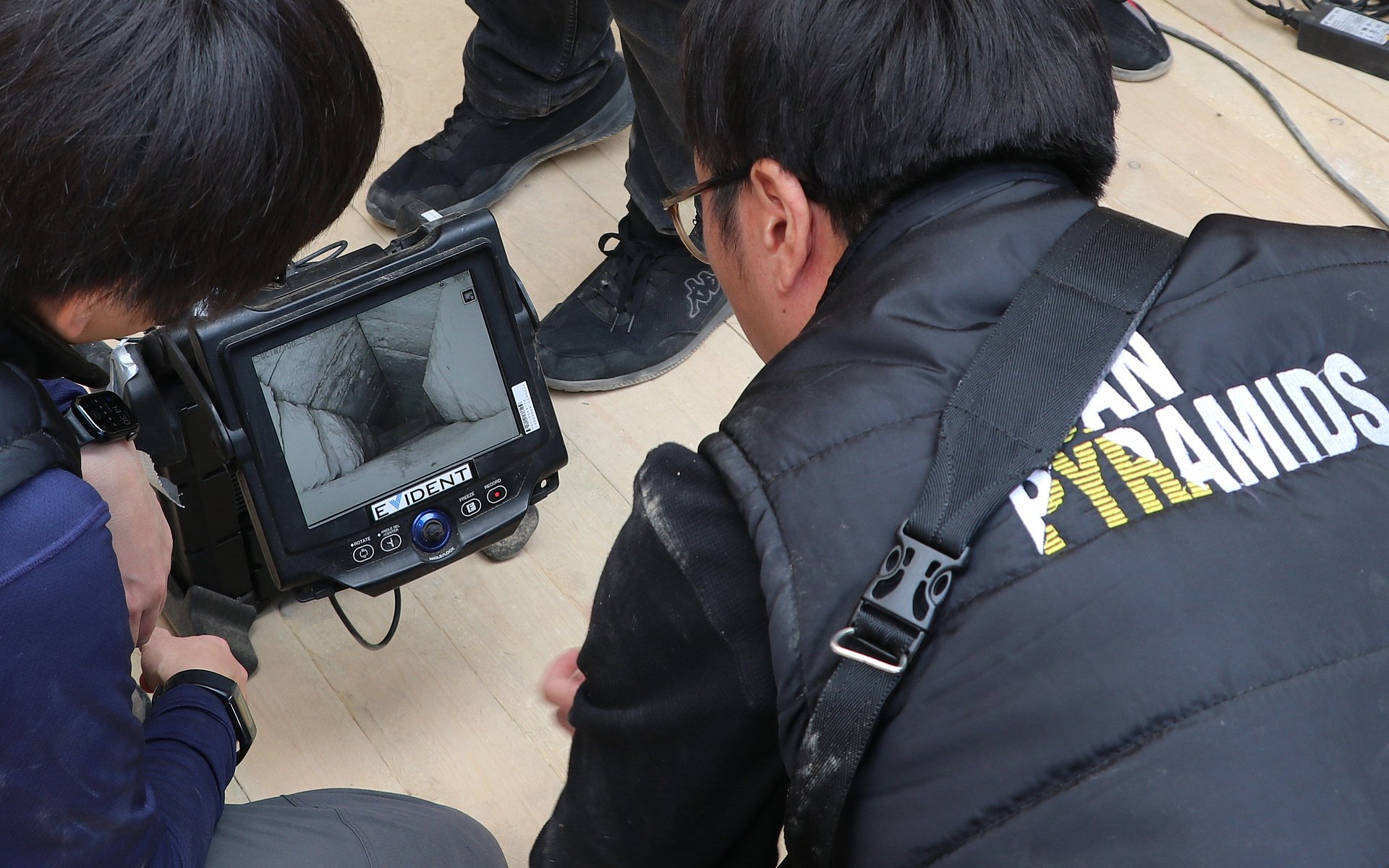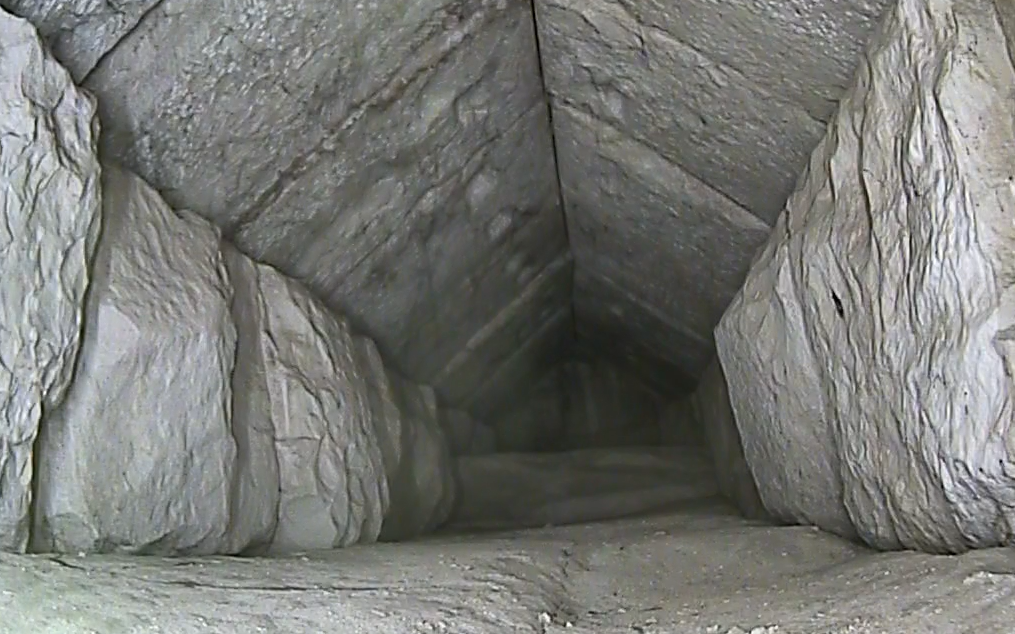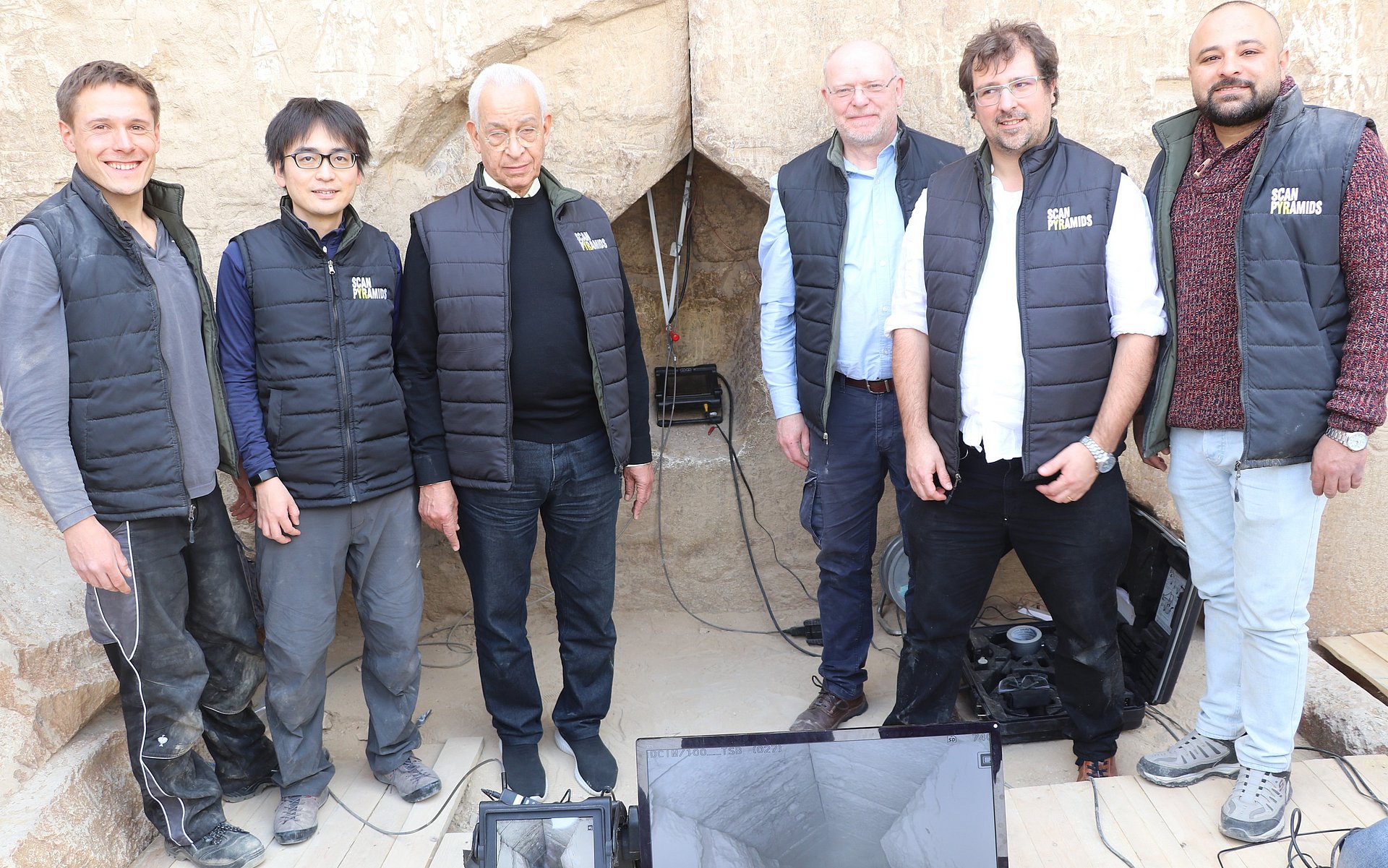An international research team has discovered a previously unknown chamber in the Cheops pyramid of Gizeh. As early as 2016 measurements had given reason to assume the existence of a hidden hollow space in the vicinity of the chevron blocks over the entrance. Now scientists from the Technical University of Munich (TUM) have used ultrasound and endoscopy to make an important contribution to confirming this assumption. The status of the Egyptian pyramid as one of the best investigated structures in the world makes this find particularly important.
 ScanPyramids
ScanPyramids The Cheops pyramid is considered the largest and oldest of the pyramids of Gizeh. As part of one of the Seven Wonders of the Ancient World it has been thoroughly explored; however, the structure still holds many undiscovered secrets. TUM researchers have now solved one more of the pyramid's mysteries. As part of the international research team "ScanPyramids" the Munich scientists have proven the existence of an empty chamber which was until now only posited based on measurement data. The hollow space is located above the original entrance to the pyramid, which is not accessible to the public.
Assumption confirmed
In 2016 several measurements by Japanese and French researchers provided evidence for the existence of the chamber. The TUM research group has been on board since 2019, helping to explore the pyramid for hidden structures. They use various non-destructive testing methods which make it possible to look into the stone blocks and the areas behind them. "The pyramids are a World Heritage Site. This means we have to be especially careful when conducting our investigations so that we don't damage anything. We're working on the Cheops pyramid with radar and ultrasound measuring devices that can be used on a non-destructive basis, and in part even contact-free," says Prof. Christian Grosse, TUM Chair of Non-Destructive Testing.
 ScanPyramids
ScanPyramids Chamber is larger than expected
The initial measuring devices provided a good first impression of the situation. The scientists then used endoscopy to confirm the assumption. The team found an opening between the stones of the chevron, a solid stone construction, through which they were able to run a tube into the chamber. They then used this tube as a guide for an endoscopic camera lens. The camera confirmed the existence of the hollow space. "Discovering a hollow space in a pyramid is already something special. But the fact that this chamber is large enough to accommodate several people, well, that makes the discovery even more important," says Prof. Grosse.
The chamber is larger than researchers had assumed in the past. The original measured data pointed to the existence of a corridor at least five meters long; however, according to initial estimates, the length of the chamber considerably exceeds this length. There are no footprints or other evidence of human activity to be seen within the chamber. Thus the research group assumes that this room has not been seen by anyone for approximately the last 4,500 years.
 ScanPyramids
ScanPyramids New chamber calls for further research
Determining the former purpose of the newly discovered chamber and what is located behind the back wall of the room will require additional research. The confirmed findings highlight the need for further investigation of Egyptian pyramids and in particular the value of the new approach using a combination of various testing technologies and procedures.
Pictures for editorial use: https://mediatum.ub.tum.de/1701573
Work at the pyramid was conducted in collaboration with and under the supervision of the Egyptian Supreme Council of Antiquities and the Egyptian Ministry of Tourism and Antiquities. "ScanPyramids" is coordinated by Cairo University (Egypt) and the HIP.Institute (France). In addition to TUM, the following organizations are also involved: Nagoya University (Japan), KEK (High Energy Accelerator Research Organization - Japan), CEA (French Alternative Energies and Atomic Energy Commission - France ), Laval University (Canada), INRIA (French Institute for Research in Computer Science and Automation - France), CNRS (French National Centre for Scientific Research - France). Additional partners and financial supporters were: Dassault Systèmes, Whatever The Reality, Emissive, La Fondation Dassault Systèmes, NHK, Suez, Le Groupe Dassault, Batscop, Itekube, Parrot, ILP, Kurtzdev, Gen-G, Schneider Electric, Octave & Octave. TUM was directly supported by TUM IGSSE and the DAAD (German Academic Exchange Service).






